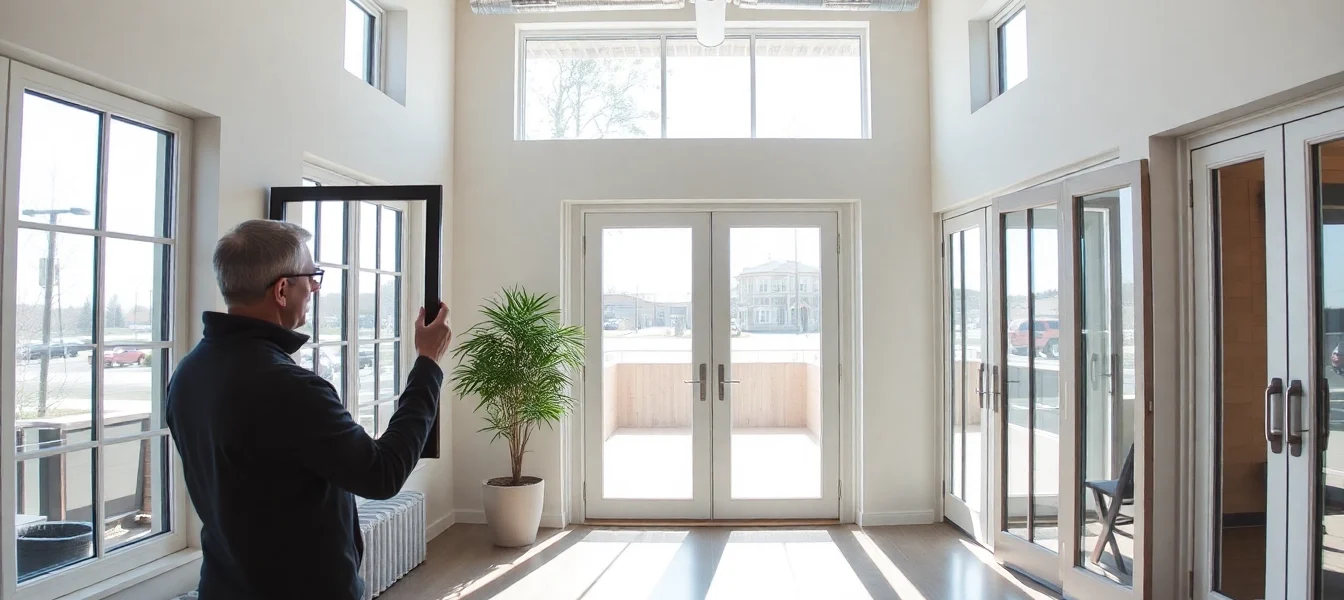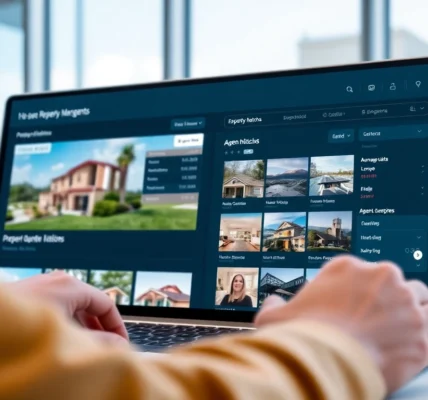Choosing the Right Window and Door Company: A Practical Guide for Homeowners and Builders
Choosing a window and door company is more than selecting a product—it’s partnering with a team that guides you from design through installation and beyond. A thoughtful supplier translates into energy savings, comfort, and long-term value for your home. This article distills the essential criteria homeowners and builders should use to evaluate options, offering practical benchmarks, step-by-step comparisons, and strategies to ensure service quality, warranty protection, and ongoing support across reputable providers.
What Sets a Window and Door Company Apart in Today’s Market
Key qualities to evaluate in a window and door company
Beyond a glossy brochure, assess a company’s depth of offering, technical know-how, and installation rigor. Look for: a diverse catalog of materials and styles that suit different architectural aesthetics; customization options (sizes, finishes, hardware) to match home character; certified installers who follow precise measurement and installation protocols; robust warranty coverage and clear policies for service calls; and a reputation for dependable on-time performance and post-install support.
- Material versatility: vinyl, aluminum, fiberglass, wood-clad options to balance cost, durability, and maintenance.
- Design flexibility: customized profiles, glazing choices, and weather-sealing systems that reduce drafts and improve comfort.
- Installation excellence: trained technicians who perform precise measuring, square openings, and airtight seals.
- Transparent pricing: detailed quotes with scope, products, and expected timelines to minimize surprises.
- Service continuity: responsive warranty handling and proactive maintenance guidance after project completion.
Energy efficiency, materials, and certifications
Energy efficiency is a core driver of homeowner satisfaction. The top differentiators include glazing technology (low-emissivity coatings, gas-filled panes), insulated frames, and spacer systems that minimize heat transfer. Materials affect long-term performance: vinyl offers affordability and low maintenance; fiberglass blends strength with thermal stability; wood-clad options emphasize aesthetics with exterior longevity; aluminum can be ideal for large expanses with modern lines. Reputable providers align products with independent standards such as ENERGY STAR and NFRC ratings, providing transparent U-factors, solar gain (SHGC), and visible light transmittance. When evaluating options, request NFRC stickers and performance data for the specific configurations you’re considering, and compare across products to determine the best fit for climate and occupancy patterns.
Certification and testing signals go beyond price. A company that prioritizes energy performance typically offers enhanced gaskets, airtight seals, and reputable glazing suppliers, which together deliver measurable comfort and reduced utility bills over the life of the project.
Customer reviews and case studies
Trustworthy customer feedback reveals how a company performs in real homes: installation timeliness, minimal disruption, and accurate warranty handling. Seek case studies that quantify outcomes—thermal comfort improvements, measurable reductions in energy usage, and aesthetic alignment with home style. Authentic reviews often include before/after photos, project scope, and post-install service notes. A balanced mix of long-term testimonials and recent projects helps validate consistency across different home types and regional climates.
Materials, Build Quality, and Warranties
Materials and durability for a window and door company
Durability begins with the chosen material and extends through hardware quality, glazing, and frame construction. Vinyl frames resist warping and require minimal maintenance, while fiberglass provides rigidity and thermal performance with lighter weight. Wood or clad options deliver traditional aesthetics but demand climate-aware maintenance. For exterior entries and patio doors, consider weatherstripping systems, reinforced hinges, and kid-friendly, long-lasting hardware. A well-built product pair includes a solid frame-to-sash connection, weather seals that perform under freeze-thaw cycles, and glazing that remains stable against UV exposure. Durability also depends on the installation approach—proper alignment, secure mounting, and protective flashing to prevent water intrusion are essential components of long-term performance.
Warranty options and coverage from a window and door company
Warranty depth matters as much as the product itself. Look for a combination of manufacturer warranties (covering glass, seals, and frame integrity) and workmanship warranties (covering installation-related issues). Typical programs may offer multi-year or lifetime coverage on hardware and performance, with terms that are transferable to new homeowners. Clarify what constitutes “normal wear and tear,” what maintenance responsibilities fall to the homeowner, and how service requests are fulfilled (response times, in-home evaluations, or replacement parts). A transparent warranty with clear criteria reduces dispute risk and provides a predictable path to resolution if issues arise.
Care and maintenance after installation
Protecting your investment involves simple, proactive steps. Create a seasonal maintenance routine: clean and lubricate moving parts; inspect weatherstripping and caulking around frames; re-glaze or repaint wood surfaces as recommended; verify seal integrity after storms or heavy weather; and schedule periodic inspections with your installer to catch minor issues before they become costly repairs. Proper maintenance extends performance, preserves appearance, and supports dependable energy efficiency over the life of the windows and doors.
The Buying Process: From Consultation to Installation
Consultation expectations with a window and door company
A productive consultation begins with a needs assessment that aligns design preferences, energy goals, and budget. Expect a project briefing that covers performance targets (comfort, noise reduction), material choices, hardware finishes, and possible design alterations to accommodate existing openings. A quality consultant will present design mockups, provide precise price estimates, and outline an installation plan with milestones and roles for both parties.
Precision measuring and permits
Accurate measurement is foundational to fit and performance. Reputable installers take multiple measurements at each opening and verify sill levels, rough openings, and drainage slopes. Depending on location, permits or HOA approvals may be needed; a competent team can navigate these steps, handling paperwork, scheduling inspections, and ensuring compliance with local building codes. Pre-installation coordination reduces delays and keeps the project on track.
Professional installation timeline
Installation typically unfolds in staged phases: site protection and removal of old units, framing checks and flashing installation, window and door placement with shims and fasteners, sealing and waterproofing, interior trim work, and final adjustments. A well-planned timeline minimizes disruption, with clear expectations for day-by-day activities, debris removal, and a thorough post-install walkthrough to confirm fit, finish, and operation.
Common Mistakes to Avoid When Choosing a Window and Door Company
Pricing traps and hidden fees at a window and door company
Compare apples to apples by examining scope, product specifications, and included services. Beware quotes that omit essential components such as trims, flashing, or removal of old units. Ask for a detailed breakdown of every line item and request a written change-order policy to prevent last-minute price escalations during installation.
Overlooking energy ratings and warranties
Energy ratings affect long-term operating costs far more than upfront price. Always confirm the exact U-factor, SHGC, and given performance for the specific configuration. Pair this with warranty coverage details to ensure you’re protected against both product faults and installation shortcomings over time.
Rushed decisions and counterfeit products
Take time to verify supplier legitimacy, check references, and confirm official dealer networks. Avoid pressure tactics or unusually aggressive discounts that suggest counterfeit or subpar components. A deliberate, well-documented decision process yields better long-term value and peace of mind.
Showcase: Real Projects and Measured ROI
Case study: energy savings with a window and door company
In a mid-sized home retrofit, a switch to energy-efficient glazing and better sealed frames produced a notable drop in peak heating and cooling loads, translating into a measurable reduction in monthly utility bills. While results vary by climate and occupancy, a properly selected combination of low-E glazing, insulated frames, and airtight seals typically yields payback periods ranging from a few to several years, depending on prior inefficiencies and usage patterns.
Aesthetics, curb appeal, and home value impact
Beyond savings, new windows and doors refresh exterior lines, improve interior ambiance, and support architectural coherence. A cohesive color palette, enduring finishes, and proportional framing enhance curb appeal and can positively influence resale value, particularly when the chosen style aligns with the home’s age and neighborhood context.
Dealer network, service, and post-install support
A robust network ensures easier service and smoother maintenance. A responsive service model includes rapid response to service requests, availability of replacement parts, and clear guidance on warranty claims. Establishing a direct line of communication with a trusted dealer helps maintain performance over time and reduces downtime when issues arise.

